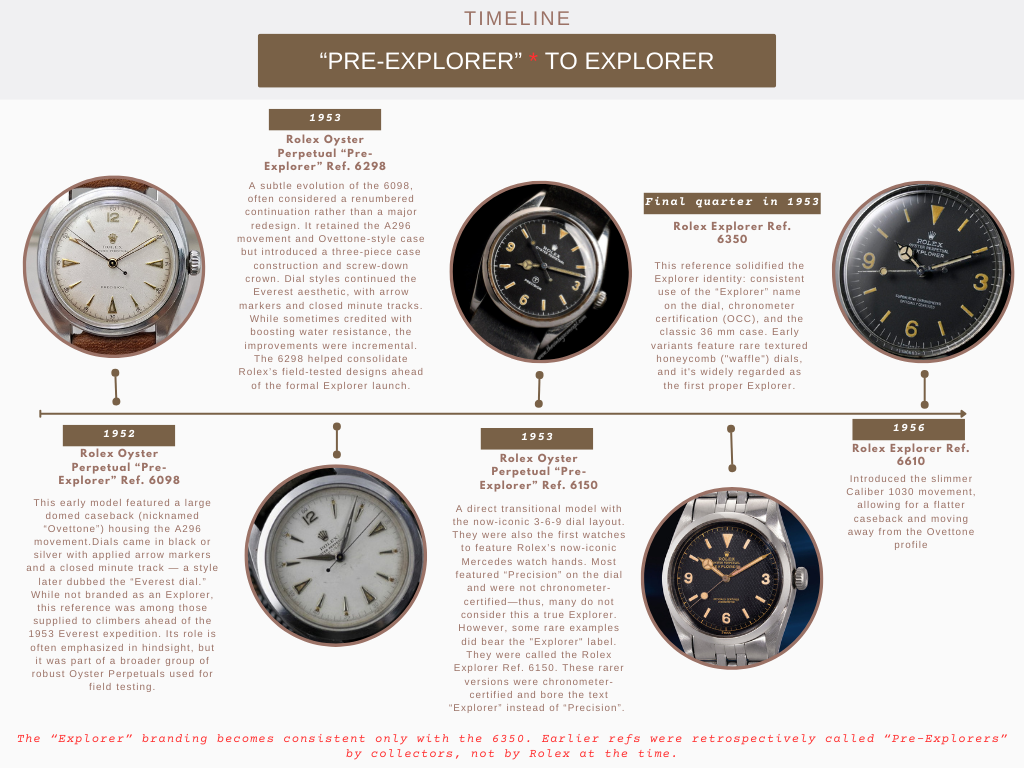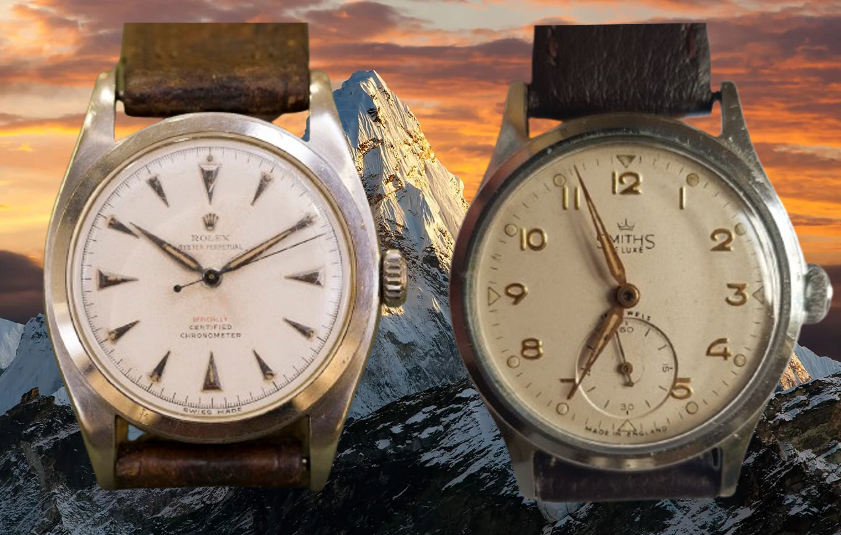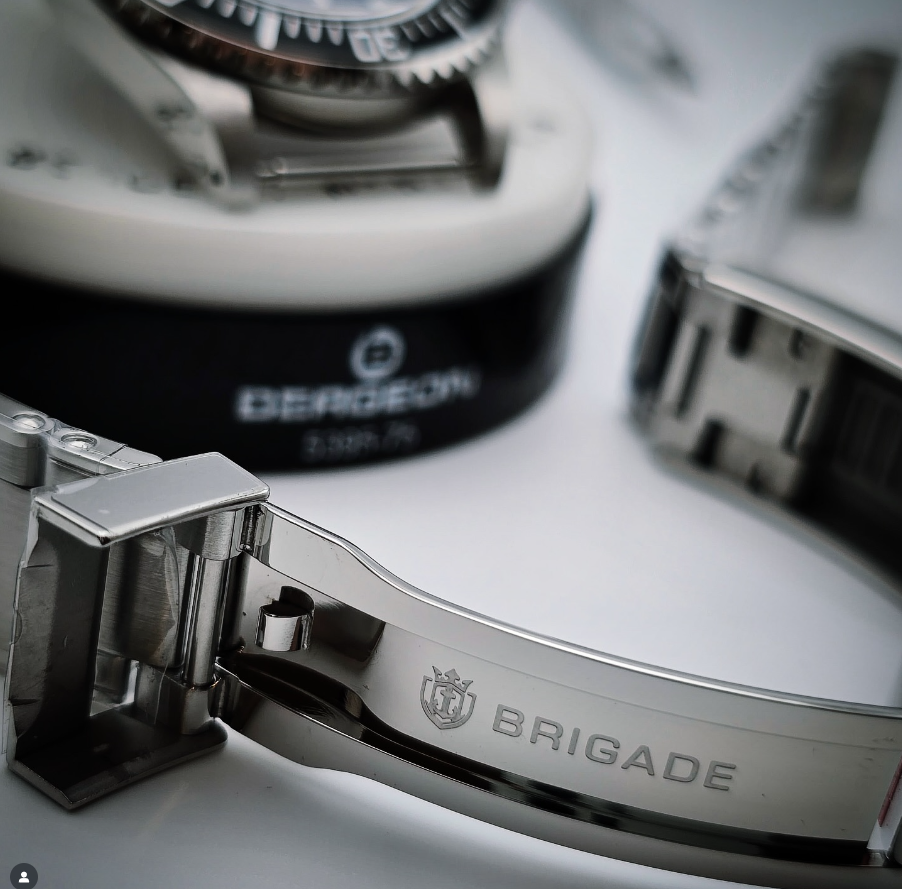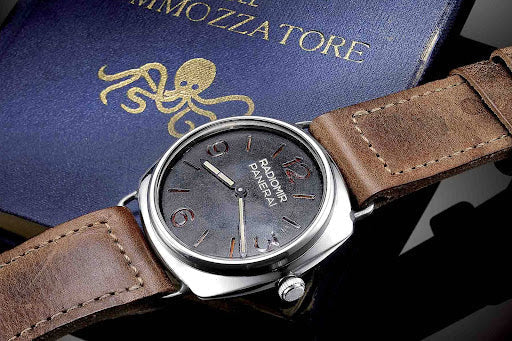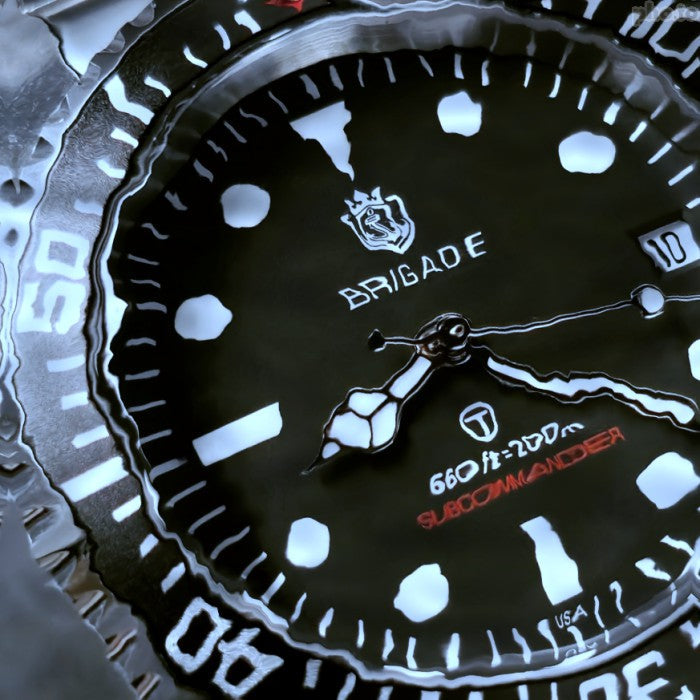October 30, 2025
Wristwatches: From Tools to Styles
The Second World War has ended. A young American veteran comes home in 1945 wearing the sturdy wristwatch that guided him through battle. This same timepiece, once a vital tool on the battlefield, is now becoming something more in peacetime – a part of his daily style. In the post-war years, millions of people began wearing watches not just for telling time, but as personal accessories. We’ll explore how, after World War II, wristwatches transformed from purely practical instruments into stylish icons of fashion and status in the 1950s and especially the 1960s. We’ll see how booming consumerism, clever advertising, and pop culture converged to make the wristwatch an essential fashion statement.
- A Post-War Consumer Boom
- The 1950s
- The 1960s
- Pop Culture
- Conclusion: The Big Shift
Table of Content
A Post-War Consumer Boom
When World War II ended, millions of soldiers returned home, many with trusty wristwatches still strapped to their wrists. In the chaos of battle, a wristwatch had been a lifesaver – a tool for synchronizing maneuvers and navigating under pressure. But once peace arrived, those same watches found new life back home. Returning soldiers kept wearing their reliable military-style watches in civilian life, sparking a trend. By the late 1940s, wristwatch adoption had become widespread among the general public. It stopped being just a tool and became a style accessory, marking a new chapter in culture. In those post-war years, everyday civilians eagerly adopted the wristwatch as part of daily life. After all, if a watch could help win a war, imagine what it could do in peacetime – keep a busy salesman on schedule, or a mom on time for the school pickup. And beyond utility, people began to enjoy how a watch looked on the wrist, not just what it did.
The late 1940s and 1950s saw a huge economic and consumer boom, especially in the United States. Families who were frugal and saved through the Depression and wartime suddenly had money in their pockets and dreams of modern, stylish living. Picture a 1950s American family on a Saturday outing downtown: bright neon shop signs, new cars on the road, and gleaming watch displays in jewelers’ windows. During this post-war boom, the wristwatch industry flourished. Swiss watchmakers had the market to themselves and took full advantage of the demand. A generation that had once made do with hand-me-down clocks or pocket watches was now eager to buy their first quality wristwatch.
A watch became a symbol of reaching prosperity and elegance in peacetime. For many, a watch became the ultimate gift to mark life’s milestones: a reward for a promotion, a graduation present, or a birthday surprise. Watchmakers sensed this excitement and started creating designs that weren’t just functional, but downright beautiful. They experimented with new case sizes, shapes, dial colors, and features.

The 1950s
After World War II, a new era of hope and rejuvenation began in the 1950s. The design and aesthetics of wristwatches started to shift away from the purely functional, military-inspired styles of the earlier decades to a design and aesthetic focus. Two examples of this were the Rolex Explorer released in 1953 and the Longines Conquest released in 1954. These timepieces started to straddle the line by offering functional heritage while introducing elegant designs, offering a stark contrast to the rugged appearance of wartime watches. This shift in popular aesthetics represented a deeper cultural transition towards hope and positivity in the post-war world. Notably, wearers no longer needed the full extent of their watches’ capabilities, only the idea of what they could do.
Additionally, the 1950s saw a continuation of the trend toward larger wristwatch cases, which had started to pick up steam in the decade before. Both practical and aesthetic reasons contributed to this trend, as larger dials made reading easier and provided more room for creative design. In addition to their practical use as timepieces, wristwatches are becoming more and more popular as status and fashion accessories. In response to this demand, brands from all over the industry expanded their selection of sizes, including models with striking, eye-catching designs that highlighted their presence on the wrist. There were even watches advertised for children with cartoon characters on them.

1958 Watches AD from a Thrift Store
Image credit: Retrowaste – "1950s Watches: Styles, Trends & Pictures" https://www.retrowaste.com/1950s/fashion-in-the-1950s/1950s-watches-styles-trends-pictures/

1957 Watches AD from a Thrift Store
Image credit: Retrowaste – "1950s Watches: Styles, Trends & Pictures" https://www.retrowaste.com/1950s/fashion-in-the-1950s/1950s-watches-styles-trends-pictures/
The 1960s
In the 1960s, the variety of case shapes for watches exploded. There were round watches, square watches, oval watches, and even quirky asymmetrical watches. There was a shape and style for everyone’s taste in the 60s. Walk into a watch shop in 1965 and you’d see a rainbow of dial colors and designs. One watch might have a sleek, minimalist face for the modern businessman, right next to another with complex sub-dials and scales appealing to the gadget-lover.
In the 1960s, rugged sports models like the Rolex Submariner – originally built for scuba divers – suddenly found themselves worn in far more than just coral reefs and submarines. When James Bond flashed a Rolex Submariner in the popular 1964 film Goldfinger, it was a pioneering moment of product placement that cemented the dive watch’s place in pop culture. Moviegoers saw Sean Connery’s 007 coolly checking his wrist, and they wanted to do the same. The Submariner’s tough stainless steel case and bold black dial shouted adventure and cool confidence. Soon, it wasn’t uncommon to see businessmen and college kids alike sporting chunky diver’s watches with their everyday clothes – even if the deepest water they ever dived into was a swimming pool. The trend of the time saw these once-utilitarian tools become fashion statements for the ambitious and the adventurous. In fact, throughout the ’60s, the popularity of these tool watches skyrocketed, and the formerly utilitarian dive watch had turned into a badge of style and status, worn proudly on land by those who might never have worn a wetsuit.

James Bond and His Submariner Ref. 6538 (Nicknamed the Bond Sub)
Image credit: Oren Hartov from GQ – "This Rolex Submariner Was James Bond’s First-Ever Watch" https://www.gq.com/story/rolex-submariner-james-bond-nickname
Functionality didn’t disappear – far from it. The coolest watches of the 60s managed to blend practical features with flair. It became trendy to have a watch that did more than just tell the time. You might drool over watches with chronographs, calendars, or even alarm functions. The space-age spirit of the 1960s had everyone looking to the stars, and watch companies knew it. They rolled out models like the Omega Speedmaster, which needs no introduction as the watch NASA astronauts wore on the way to the Moon.

1969 Omega Speedmaster Professional NASA Advertisement
Owning a Speedmaster or a similar chronograph in the 60s was like wearing a piece of the future on your wrist – it told the world you too had the “Right Stuff”. Everyday people might not use the chronograph function to time a rocket launch, but it sure felt cool to have that capability. Watches were conversation pieces now: your watch could hint at your hobbies, your tastes, your aspirations. Are you a daring type? Your hefty pilot’s watch or diving watch gave it away. More sophisticated? That slim gold dress watch peeking from under your cuff spoke volumes. By the end of the decade, the idea that a wristwatch was just for telling time was thoroughly outdated – these were personal style accessories and status symbols, woven into the fabric of daily fashion.
Pop Culture Influence
The 1960s were an era of influential figures who themselves loved and popularized wristwatches as accessories. Two such icons were Elvis Presley and Jacqueline Kennedy. Each, in their own way, showed America that a wristwatch could be much more than a time-teller; it could be a signature part of one’s image.
Elvis Presley had a known affection for watches (he owned several fine pieces and was famous for gifting them to friends). But one watch in particular became entwined with his legend: the Hamilton Ventura, a funky, futuristic-looking electric watch. Its wild, triangular case was like nothing people had seen before, more like a space-age gadget than Grandpa’s old ticker. Elvis was drawn to this bold design and cutting-edge tech, and in 1961, he wore his own white-gold Hamilton Ventura in the Hollywood film Blue Hawaii. In doing so, he inadvertently launched the watch into stardom. There on the big screen was Elvis, strumming his guitar in tropical shirts, with this sci-fi style watch on his wrist that looked ready for a rocket ship. Fans noticed. In fact, the buzz around Elvis’s cool watch gave Hamilton more publicity than any ad campaign could. Virtually overnight, the Ventura became the watch to have for the hip crowd. Young men who idolized Elvis suddenly wanted that watch as a piece of his rebellious, modern style. Even today, the Hamilton Ventura is remembered as one of the most iconic movie watches in history, thanks to Elvis’s star power.

Elvis Presley's Hamilton Ventura
Image credit: Jared Belson from Time and Tide Watches – "Three of our favourite Hamilton Ventura watches to celebrate Elvis’ birthday" https://timeandtidewatches.com/hamilton-ventura-elvis-presley/
On the elegant end of the spectrum, imagine Jackie Kennedy in the 1960s. First Lady, fashion icon, the picture of grace – and always, it seemed, with a lovely watch on her wrist. In Jackie’s case, it was a gold Cartier Tank with a black leather strap, which was gifted to her in 1963. She wore it constantly, and it became part of her signature look. The Cartier Tank is a classic design – clean lines, refined and understated – and on Jackie’s wrist, it perfectly complemented her pillbox hats, tailored suits, and pearls. In photographs from the 60s, you can often spot that watch peeking out, a little hint of gold amid her stylish outfits. And in embracing that watch as part of her public image, she showed millions of women that a wristwatch could be both practical and elegantly fashionable. The effect was huge. The Cartier Tank, already an elegant model since the 1920s, became the accessory for sophisticated ladies from the 60s onward, thanks in no small part to Jackie Kennedy making it look so effortlessly stylish. Even today, that model is often lovingly nicknamed “the Jackie watch” among collectors.






Between Elvis and Jackie – the showman and the style maven – we see how watches in the 1960s weren’t one-size-fits-all. They were as diverse as the people who wore them. A watch could scream for attention with modern flair, or quietly underscore an outfit with class. The wristwatch had completed its metamorphosis from its rough-and-tumble origins. What started decades earlier as a strictly utilitarian object had become, by the mid-to-late 60s, a coveted fashion accessory and a symbol of identity. Whether you were a rock star, a First Lady, or an ordinary citizen with a bit of spending money, your watch told a story about you.
Conclusion: The Big Shift
For the first half of the 20th century, the wristwatch was a tool used by those who needed the functionality and durability in harsh conditions. Starting in the 1950s, the functionality began to be more about presenting an image, as most wearers were nowhere near the extreme environments some of these now iconic watches were designed for. By the end of the 1960s, watches had fully stepped into the fashion world. Many watches from around this time, including the Explorer, Speedmaster, and Ventur, remain all-time classics by striking the perfect balance between form and function. They still told time, but more importantly, they also told your story: adventurer, trend-setter, professional, sophisticate. The wristwatch as a statement piece would be forced to evolve even further as the technological revolution was right around the corner.
What's Your Favorite Watch to Wear For Different Occasions?



